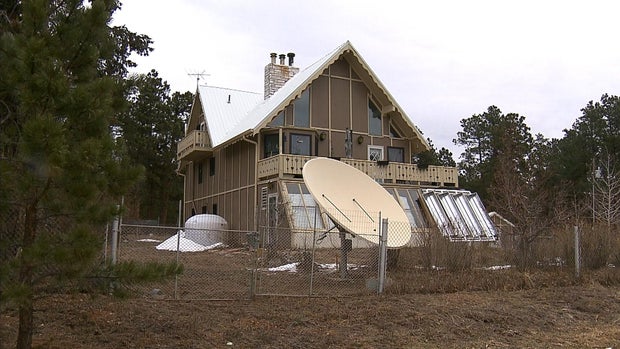Help will soon be available for Colorado homeowners left without options.
Wildfires have caused insurance companies to abandon many customers. Now another option, the “insurer of last resort,” is set to launch in 2025.
Colorado’s FAIR Plan is a game changer for homeowners like Erik Johnson. For eight years, he and his wife have lived in Coal Creek Canyon where they bought a 50-year-old fixer-upper.
“This is the Colorado dream right, to live in a mountain, to have snowcapped peaks down the street, to have a view of the Great Divide up the road? I can’t imagine living anyplace else,” said Johnson.
CBS
Last month their insurer suddenly dropped them, and the nine others he called refused to even quote them a new policy.
Even before the Marshall Fire three years ago (the most devastating wildfire the state has seen) the homeowner’s insurance market showed signs of instability. The $2 billion disaster became a tipping point. In 2022, the average premium jumped 23% and a third of carriers canceled policies.
Without insurance, Johnson’s mortgage company could foreclose on their home. He said he panicked.
“It doesn’t matter the condition of our home, the age of our home. It’s where we live. We weren’t even asked if we have done fire mitigation before.”
Colorado Insurance Commissioner Mike Conway said homeowners like Johnson were the impetus behind FAIR Plan, an insurer of last resort.
“It’s going to be that safety net that we don’t have in the market right now.”
The plan was built from the ground up by a nine member board that will oversee it. Only those who can provide proof of rejection by at least three insurers will be eligible and coverage will be capped at $750,000. Commercial Coverage will have a cap of $5 million.
In addition to premiums, which are still being determined, the plan will be funded with assessments paid by every insurer in Colorado based on their market share.
Conway said the plan benefits insurers too by spreading out the risk.
“They’re looking at it as a pressure relief valve for them, too,” he said.
While the FAIR Plan addresses the availability of insurance, Conway is pushing legislation to address affordability.
Bankrate said Colorado ranks seventh in the country for above-average home insurance costs. It reports premiums rose 25% in Arapahoe County, 21% in Adams County, and 33% in Denver last year.
Under a bill to be introduced by state Rep. Kyle Brown of Louisville, a state enterprise would sell catastrophe bonds to investors and the proceeds would help offset the cost of major wildfires.
“We can change the trajectory of where premiums are going but we can also reduce premiums,” said Conway, who also helped draft a bill that will change the models insurers use to measure wildfire risk. Many, he said, don’t factor in mitigation work by homeowners and the state, “They’re doing the work and they’re not getting the return on investment from their insurance companies.”
Johnson and his neighbors are among those who’ve lowered their risk with little reward. After nine insurers rejected him, he finally secured a bare bones policy.
“It doesn’t cover our roof or hail, and it’s $1,000 more, but it’s something,” said Johnson. “I love it here. It’s amazing. But what’s the dream if you can’t keep it?”
In addition to the wildfire legislation, Conway is also backing a bill that would create grants to offset the cost of hail fortified roofs for homeowners.
Rocky Mountain Insurance Information Association said Colorado has the second highest number of hail claims in the country and the third highest risk of wildfire.
Kelly Campbell, Executive Director of the FAIR Plan, said polling and census data indicates about 30,000 Coloradans will be eligible for the insurance when it launches early next year.

Alice J. Roden started working for Trending Insurance News at the end of 2021. Alice grew up in Salt Lake City, UT. A writer with a vast insurance industry background Alice has help with several of the biggest insurance companies. Before joining Trending Insurance News, Alice briefly worked as a freelance journalist for several radio stations. She covers home, renters and other property insurance stories.




